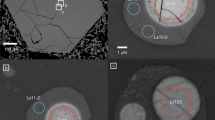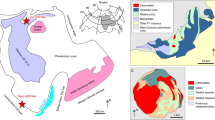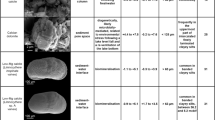Abstract
CARBONATITE magmas require some agent in solution to maintain them in the liquid state at geologically relevant temperatures and pressures1. Although the liquidus temperatures of carbonate systems are greatly lowered in the presence of water2, an unrealistically large water content (∼95 wt%) is required for maximum lowering of the minimum melting temperature2. Here we report experimental results which show that, in several carbonate systems, ∼8 wt% fluorine lowers the minimum melting and liquidus temperatures to a similar extent as do these very large amounts of water. Thus, although water may well be present in most carbonatite magmas, it is neither the only nor necessarily the main agent by which they can remain liquid. Fluorine has the further effect of breaking the 'thermal barrier' imposed by the nyerereite composition in the system Na2CO3–K2CO3–CaCO3, thereby allowing a low-alkali calcitic carbonatite magma to differentiate into a highly sodic carbonatite magma of the Oldoinyo Lengai type. Although this neither proves nor disproves a possible origin by liquid immiscibility, it restores the credibility of fractional crystallization as an important process in developing an alkali enrichment trend in carbonatites.
This is a preview of subscription content, access via your institution
Access options
Subscribe to this journal
Receive 51 print issues and online access
$199.00 per year
only $3.90 per issue
Buy this article
- Purchase on SpringerLink
- Instant access to full article PDF
Prices may be subject to local taxes which are calculated during checkout
Similar content being viewed by others
References
Gittins, J. in Carbonatites (ed. Bell, K.) 580–600 (Unwin Hyman, London, 1989).
Wyllie, P. J. & Tuttle, O. F. J. Petrol. 1, 1–46 (1960).
Dawson, J. B. in Carbonatites (eds Tuttle, O. F. & Gittins, J.) 155–168 (Wiley-lnterscience, London, 1966).
Dawson, J. B. Garson, M. S. & Roberts, B. Geology 15, 765–768 (1987).
Gittins, J. & McKie, D. C. Lithos 13, 213–215 (1980).
Jago, B. C. thesis, Univ. of Toronto (1990).
Krafft, M. & Keller, J. Science 245, 168–170 (1989).
Dawson, J. B., Pinkerton, H., Norton, G. E. & Pyle, D. M. Geology 18, 260–263 (1990).
Keller, J. & Krafft, M. J. Volcanol. (in the press).
Gittins, J. & Tuttle, O. F. Am. J. Sci. 262, 66–75 (1964).
Cooper, A. F. et al. Am. J. Sci. 275, 534–60 (1975).
Koster van Groos, A. F. Am. Miner. 75, 667–675 (1990).
Author information
Authors and Affiliations
Rights and permissions
About this article
Cite this article
Jago, B., Gittins, J. The role of fluorine in carbonatite magma evolution. Nature 349, 56–58 (1991). https://doi.org/10.1038/349056a0
Received:
Accepted:
Issue date:
DOI: https://doi.org/10.1038/349056a0
This article is cited by
-
Crustal CO2 contribution to subduction zone degassing recorded through calc-silicate xenoliths in arc lavas
Scientific Reports (2019)
-
The system K2CO3–CaCO3 at 3 GPa: link between phase relations and variety of K–Ca double carbonates at ≤ 0.1 and 6 GPa
Physics and Chemistry of Minerals (2019)
-
Experimental study of REE, Ba, Sr, Mo and W partitioning between carbonatitic melt and aqueous fluid with implications for rare metal mineralization
Contributions to Mineralogy and Petrology (2016)
-
The role of the volatile phase for REE and Y fractionation in low-silica carbonate magmas: implications from natural carbonatites, Namibia
Mineralogy and Petrology (2008)
-
Fluids of anorogenic granites: A preliminary assessment
Mineralogy and Petrology (1994)



